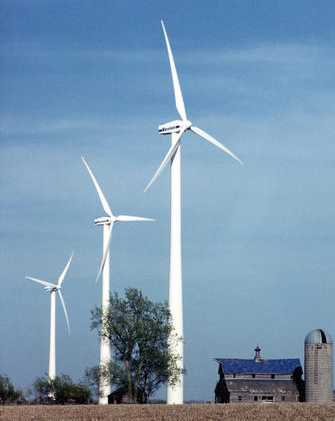on Markets, Policy, Investment, and Future Pathways
by Eric Martinot


|
Renewable Energy Information on Markets, Policy, Investment, and Future Pathways by Eric Martinot |
 |
 |
Portland adopted a local energy policy back in the late 1970s, the first of its kind in the United States. Portland's first greenhouse gas reduction plan was adopted in 1993, also the first local plan in the United States. The plan was updated in 2001 with a goal of reducing greenhouse gas emissions to 10% below 1990 levels by 2010. The plan also includes a target of supplying 100% of the municipal government's electricity needs from renewable energy by 2010 (the level was 10% in 2004).
From 1990 to 2003, Portland's per-capita greenhouse gas emissions decreased by 13%. Total emissions are only slightly above 1990 levels, despite a 16% increase in population. Gasoline use fell by 8% per capita. Electricity use for households fell by 10%.
Incentives for renewable energy include a 25% residential energy tax credit, a 35% commercial business tax credit, and funds from the Energy Trust of Oregon. The Energy Trust of Oregon collects a 3% "public purpose" tax on utility bills, about $60 million/year. $10 million/year of that goes to renewable energy projects. Other funding comes from carbon offsets, green certificataes, and municipal bonds.
Portland's "green building" program integrates energy and water conservation with recycled building materials and other environmental strategies. The city requires all new city facilities to meet LEED, the standard of the US Green Building Council. Any private construction project that uses city funding for affordable housing or major commercial development must also satisfy the LEED standard. Portland now has more LEED-certified buildings finished or underway than any other city in the United States.
Portland has an extensive history of land-use and transportation planning, based on its urban growth boundary, created some 30 years ago. The boundary has concentrated growth and allowed greater use of public transit, bicycles, and walking, reducing energy consumption in transport. Zoning codes provide incentives for building along transit corridors and parking limits for new construction.
Page updated December 10, 2004
Photo credits C. Babcock, W. Gretz and
DOE/NREL Photo Information Exchange